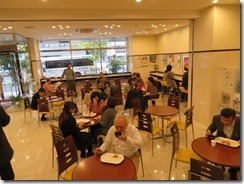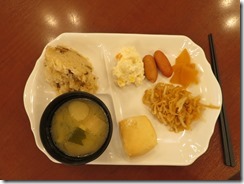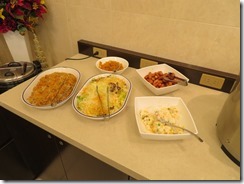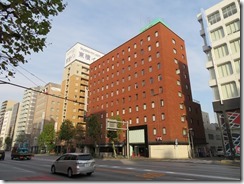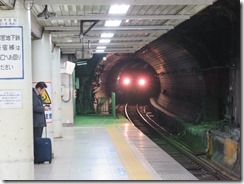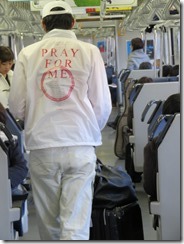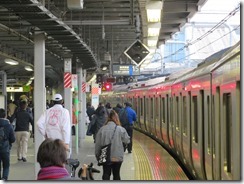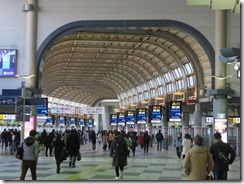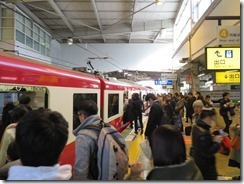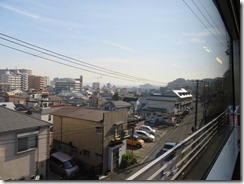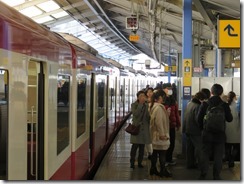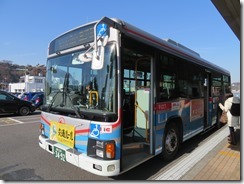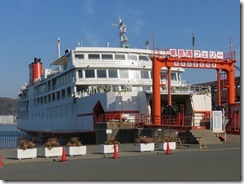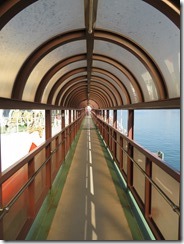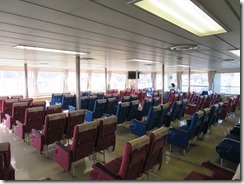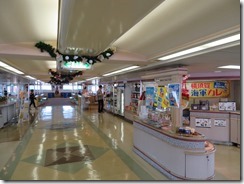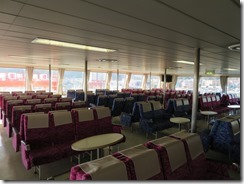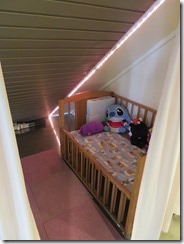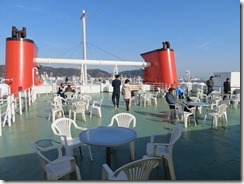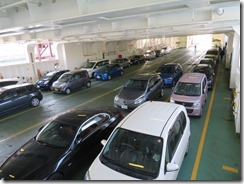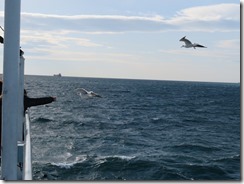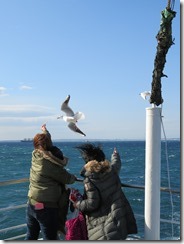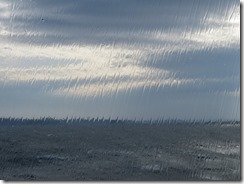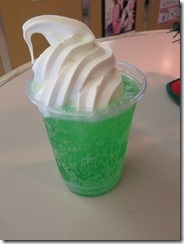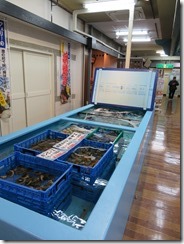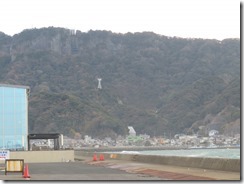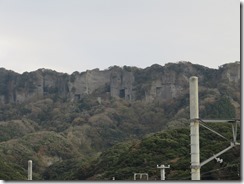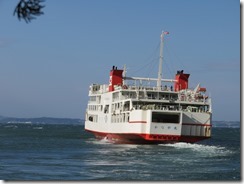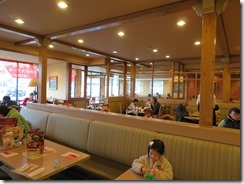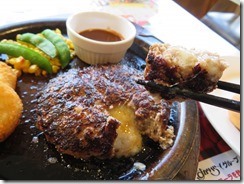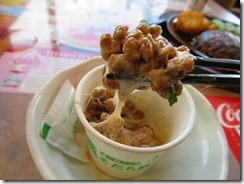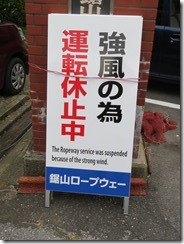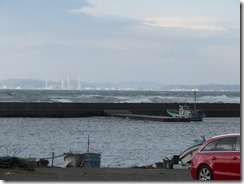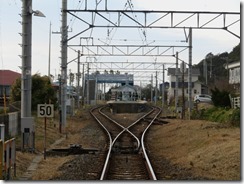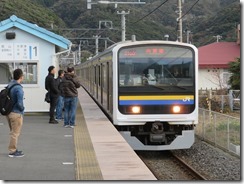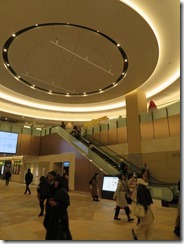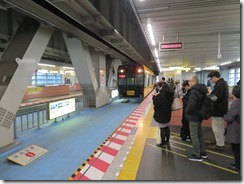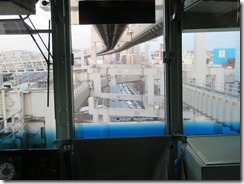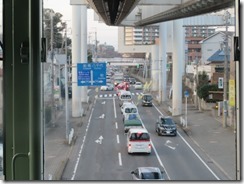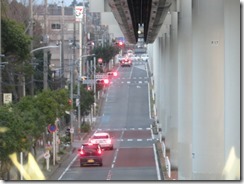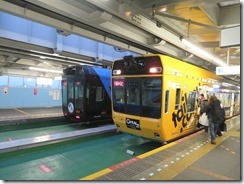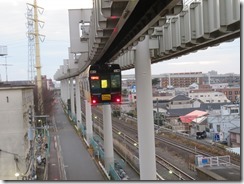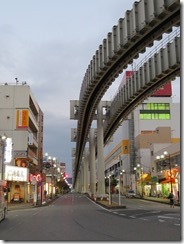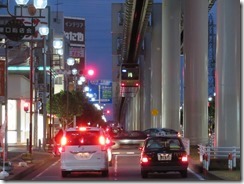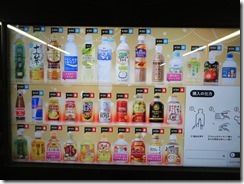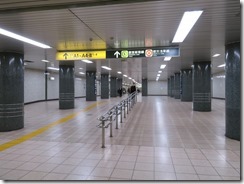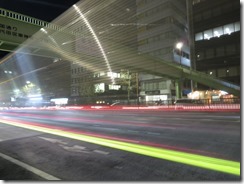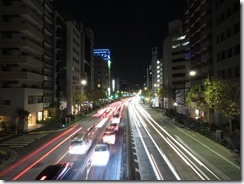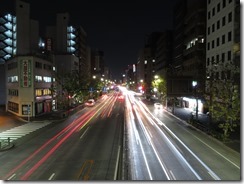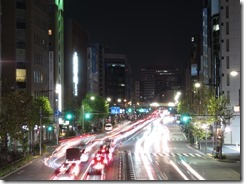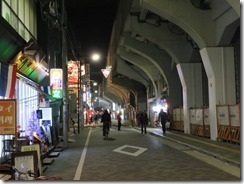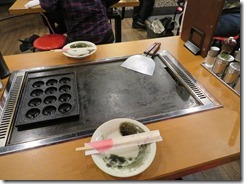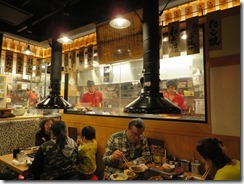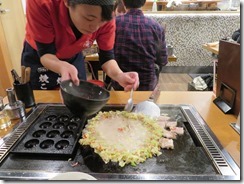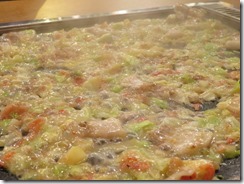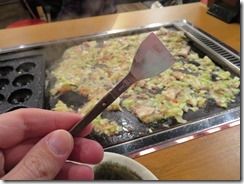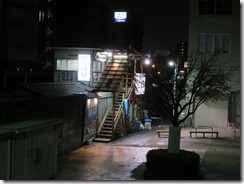I think I’ve discovered a new appreciation on this trip as to the difference between a line on a map and the actual walking path in the real world. I mean, don’t get me wrong, I already knew there was a difference. However, I did a lot of my planning for this trip joining dots on Google maps, especially compared to past trips – I think on our last trip to Japan, we largely relied on maps from Lonely Planet. I was particularly aware of it on my day in Kamakura, where drawing a line that connected four temples also crossed over four mountains.
So, back in the big smoke, and back in Toyoko Inn as well. The ryokan in Kyoto and the minshuku in Yunomine were both very nice, but it’s also nice not having to brave the cold every time I venture out of my room. Or, you know, not having to eat fish for breakfast. =P This one’s got the door keys rather than card entry. One of the handy things about using the door key is that the use of the keyring to activate the power in the room can be tricked by inserting anything of a similar shape – like, for example, the toothbrush they provide – while the card-key power thing has to be the card-key (I tried).
One interesting thing I discovered a while ago that I’d forgotten until I was reminded of it by a poster in the lobby just now, is that Toyoko Inn actually holds the Guinness Word Record for the largest hotel chain with 100% occupancy for 24 hours. From the 2nd to the 3rd of May 2015, every single one of their 48,831 rooms across 249 hotels was occupied.
But yes. Started with breakfast. Similar sort of things at this hotel to the other ones. Think the breakfast room is quite a bit bigger than my other two Toyoko Inns (though I’d have to check the photos to be sure), and it was fairly full too.
Headed out to start my day. Here’s a photo of my hotel taken while standing on the top step of the Bakurocho Station exit – that’s how close it is. Actually, there’s another exit directly across the road from here, on the same side of the road as the hotel, but you don’t get as good a view of the hotel from there.
Since this is day fifteen of my trip, my fourteen-day JR Pass expired yesterday, so today I had to pay my own way, with the Suica card. As previously mentioned, the Sobu (Rapid) Line passes my hotel, but trains on the line continue onto the Yokosuka Line past Tokyo Station, some of them going all the way to Kurihama – which, conveniently, was where I needed to head to first for today’s sightseeing. And I carefully checked last night, and one of those trains would be stopping at Bakurocho at 9:00.
When I ambled into the the station at 8:51, though, with plenty of time to go, I discovered the train I wanted was in fact leaving at 8:51. Scrambled down to the platform just in time to watch it pull out. Suddenly occurred to me that it’s possible I was looking at Tokyo’s timetable rather than Bakurocho’s.
Hastily researched non-direct routes, and it turned out the best plan would be to catch the next Sobu Line train to Shinagawa, and switch to the private Keikyu Main Line. In actual fact, it is possible to do it with one train, since some Keikyu trains continue onto the Asakusa subway line, which also passes near my hotel, but that was curiously more expensive than the half-JR-half-Keikyu plan. (Side note, Keikyu’s abbreviation for station numbers is KK, but surely KQ would be a better choice… =P ). The platform at Keikyu Shinagawa is covered in markings for where to stand in line for various different trains. I’m still impressed at how the trains can stop exactly at the markings.
Arrived at Keikyu Kurihama Station and changed to the bus for Tokyo Wan Ferry Port. Conveniently, the Keikyu station is closer to the bus stop than the JR station. I was originally intending to walk to the port, but I wasn’t at all sure I’d make it to the ferry port in time.
On a side note, this is one part of the trip that caused some small stressed in planning – I’d originally intended to do today’s activities during my first stay in Tokyo, but it turned out that during that week specifically, the ferry operates on a reduced schedule of only one departure every two hours instead of one per hour (think it’s because one of the two ferries is in drydock then). When I abruptly decided to go up the Skytree on the Tuesday, it pushed Kamakura to Wednesday, and Wednesday’s original plans to today. The downside is that it put some fairly expensive train plans outside of my JR Pass period (though, as today’s weather was not blindingly bright and sunny, that’s probably ok on balance). I’d also considered doing the Tokyo Metro Escape Game today as well, since the pack includes a travel pass for the Metro lines, but I didn’t want to wait that long, and wasn’t sure I wanted to do it on a weekend either.
But anyway. Plans, plans, plans. I think I’ve worked out why it’s taking me longer and longer to blog. Where was I? Oh yes, boarding the ferry. The Tokyo Wan Ferries are car ferries that run across the mouth of Tokyo Bay from Kurihama here in Kanagawa Prefecture over to Kanaya on the Boso Peninsula in Chiba Prefecture (so yeah, I’m outside Tokyo again, but still within the Greater Tokyo Area). My ferry’s named Kanaya-maru (-maru being a typical suffix for Japanese ship names, not sure why) – looking at my photos now, seems the other one is named Shirahama-maru (it’s a place near Kurihama). And the way Japan does ferries is just amazing. It’s almost like a mini cruise ship, with a deck and a half of indoor seating space including lounges, seats and tables, and just rows of seats, along with a kiosk and even a small souvenir shop. Then there’s more seating outside on the upper deck, then there’s the car deck, and another half-deck of what I suspect is bicycle parking, though there wasn’t anything there on this trip. There was even a small room under the stairs where a small child could sleep. And vending machines, of course. No safety briefing to speak of, mind, though there was a TV parked on a bench to one side which was constantly running a video of how to put on a life jacket.
The boat was hardly full, but I suspect it’d still be plenty roomy even if it were. I really want to try one of the long-distance ferries they have here, the ones that travel out to the distant Okinawan islands, or the mid-ocean islands of Toyko. The ones with tatami-mat rooms to sleep in, and so forth. In any case, it was quite a nice trip. A little bit of motion, because we were essentially crossing the corner of the ocean. At one point, water even splashed up off the bow so high that it drenched the front windows, but sadly I wasn’t standing close enough to the windows at the time to get a good photo.
I got a melon float to drink from the kiosk, and was a little curious as to why the ice cream seemed to be floating so high. It’s because it was standing atop a stack of ice cubes literally the size of jawbreakers (only, you know, cubical). Like, there was almost no space in the cup for the melon soda. A little bit nonplussed. Also got a packet of peach-flavoured “Fettuccine Gummi” (basically like gummy worms, but flat like fettuccine). “Has the mouthfeel of al dente pasta” it says on the back.
Half an hour later or so, we arrived at Kanaya Port. Tempted to write “all too soon” here, because it was such a nice boat, but I did have places to be. Or, place to be. See, my target today was Nokogiriyama, or Sawtooth Mountain, because that’s what it looks lie. It served as a stone quarry during the Edo Period, which gave it its distinctive shape. It’s also the site of a temple, Nihon-ji, which includes a number of sights including the largest stone pre-modern Buddha statue, and a wall with 1500 hand-carved statues. Today, it’s served by the Nokogiriyama Ropeway, which runs from within walking distance of Kanaya Port.
However, when we landed, it was incredibly windy. So windy that I was afraid the ropeway wouldn’t be running. Adding to my concerns, looking at it from a distance, I couldn’t see the ropeway gondola moving at all. I decided to stop for lunch at a famiresu I passed on the way. “Famiresu” is short for “family restaurant”, and they typically serve a wide range of western-inspired cuisine. I’d been wanting to eat at one on this trip, and there was one right there. I had a cheese-stuffed hamburg steak, with sides of chicken soup and warm bread.
I also got me some natto. It’s slightly fermented soybeans, making them all slimy. It’s supposed to be an aquired taste – like, natto is to Japan as Vegemite is to Australia – but honestly, they weren’t all that bad. I mean, I didn’t like the taste, but only in the same sense that I don’t like the taste of, say, tomatoes. Discoverd, though, that the slime is very stringy, and I was starting to get it everywhere. Small strands were even drifting around in the air.
When I headed on from there, it was still windy. One particularly strong gust of wind pelted me with dust and leaves so hard that it actually hurt. And when I finally reached the ropeway, it was so windy that it wouldn’t be running. Very sad face. There is a walking path up, but it was already 2pm by this point – if I walked up, I’d have to turn around and head straight back down again in order to get back during daylight. Guess I’ll have to come back another time.
So I trudged back to the train station to do the next step in my plans: ride another suspended monorail, this time in daylight. In particular, the Chiba Urban Monorail, which leaves from Chiba Station (the main station in Chiba City, the capital of Chiba Prefecture), at the end of the Uchibo Line, which passes through Hama-kanaya Station. Almost missed the train, though, when I wound up on the wrong side of the tracks – the station could only be accessed from one side – but I managed to jog back around to the platform just in time. (Uchibo, by the way, means “inside Boso” as it runs up the inside coast of the Boso Peninsula, as opposed to the Sotobo Line, which runs up the outside.)
Hyperdia suggested switching to an express train at Kimitsu, a few stops down the line, so I did, and so did practically everyone else. It was a straight cross-platform transfer, so it was clearly a timetabled connection. And it turns out that this new train was a Sobu (Rapid) train. As in, it travelled the Uchibo Line until Chiba Station, but if I stayed on board, I could get back to my hotel. Even more than that, it would be running all the way to Kurihama, the station I needed to reach first thing in the morning. Oh, irony.
However, I’m not one to let simple convenience get in the way of my plans, so I hopped off at Chiba as intended. I’d also wanted, mind, to get off at Kisarazu as well and ride the Kururi Line – it’s a lovely little line that runs through the Japanese countryside. However, it takes an hour each way, and there’s only a handful each day, so I’d decided that if I wasn’t passing in time for the 1pm train, I wouldn’t stop… and it was about 3:30 by this point. Passed a place en route called “Very Foods”. Very food, so nutrition, wow.
A small aside here to talk about minor countryside lines: A lot of them lead to lovely little stations I’d quite like to see, but since they’re minor lines, they’re not going to run more than a few times a day. I’d particularly put some effort into working out whether I could visit Uzui Station on this trip. It’s a small station on the Sanko Line near Hiroshima – basically the train runs through a tunnel, across an overpass over a small town, and back into a tunnel on the other side, and Uzui Station is situated on the overpass. Quite picturesque. You can Google Image Search if you’d like to see it – “Uzui Station”. Here’s the deal, though: four trains pass through in each direction per day, two in the morning and two in the evening. I could visit, but I’d either need to spend the day there, or spend the night there. Unfortunately, the Sanko Line is closing permanently at the end of March next year due to low line ridership, so this was probably my last chance.
But back to the story. At Chiba Station, I transferred straight to the monorail. Discovered in the station that they’re running a stamp rally to encourage visitors to Chiba City – it comes with a little booklet filled with manga four-panel strips by Åsa Ekström, a Swedish manga writer living in Japan whose strips I’ve previously found on the internet and really enjoyed – I was quite surprised to find them illustrating an official Chiba City publication. Sadly, the rally is almost certainly intended to be done with the aid of a day pass on the monorail, and a whole day to do it in – while there was one stamp actually at Chiba Monorail Station, the other four were about a quarter-hour walk (each way) from their nearest monorail stations. Oh well, I still have the booklet. The booket’s in Japanese, which revealed to me that Åsa is not pronounced “Ah-sa” as I’d thought, but “Or-sa”
And I quite enjoyed the monorail too. Like the Shonan Enoshima Monorail, it runs over roadways, though no tunnels this time. Sometimes it runs quite a long way above the roads. A little difficult to take photos, though. Incidentally, at a length of 15.2km, it holds the Guinness World Record for the world’s longest suspended monorail.
Rode to the end of the line and back, before getting off at Tsuga Station, where the monorail intersected the JR trains again (if I went all the way back to Chiba, I was concerned I’d be told off for trying to get a free ride). Arriving on the platform, I found myself back in the Twilight Zone – the trains were late. Late! Only four minutes, but still. Near as I can tell, the Shonan-Shinjuku Line was shut down at little before 10am this morning due to a wire disconnecting, and the knock-on effects were spreading to every other train line in the Greater Tokyo Area, including the private lines. Not sure of any more specifics than that.
One thing I’d forgotten about but today was reminded of: the biggest, newest vending machines now have facial recognition technology. They ascertain your age and gender, factor in what the weather is like, and suggest a drink you might like to have. Fancy.
I sadly once again missed a direct train back to my hotel by mere minutes, because I was outside taking photos of the monorails passing overhead, but I soon got a train to Chiba, and fortunately still managed to make the connection to the Sobu (Rapid) train that was waiting. Hopped off at Bakurocho Station, and decided to take the exit further from my hotel so I could look for the station stamp – found it too, using up the very last page in my stamp book. Guess I can still use the inside back cover if I find one more stamp I’d really like to have.
Strolled back towards the hotel looking for somewhere to have dinner, but I didn’t find anything. I did pause on an overpass for some time-lapse photography, though.
I kept going past the hotel, and crossed over the Kanda River to Asakusabashi Station, the other JR station that’s near my hotel – reasoning (correctly, as it turned out) there’d be a whole bunch of food places under the tracks. I eventually decided to eat at Gindaco Teppan Dojo, a place where they make okonomiyaki and takoyaki and whatnot. Or to be more precise, they give you the ingredients, and you make it, on a hotplate (i.e. a teppan) embedded in the table.
Or at least, that’s the theory, but I think the staff took pity on me and cooked it for me, at my table. I ordered monjayaki, which is essentially Tokyo-style okonomiyaki – similar ingredients, but more runny and doesn’t form into a solid pancake. Not too bad. Wasn’t sure if monjayaki takes the usual okonomiyaki condiments, so I left them off, but it could possibly have done with them. They gave me the tiniest spatula to eat it with, though. Like, so small I could only hold it with three fingers.
Headed back to the hotel to do some washing. And also, pack – tonight’s my last night before I head back to Australia. Awwww. On the plus side, the flight isn’t until 10pm, so I can still get an entire day’s sightseeing in first. Yay!
Today’s photo count: Six hundred and six
Today’s pedometer count: 12,213 steps, for 9.1km.
Today’s goshuin count: Well, I had been hoping to get one at Nihon-ji, on Nokogiriyama. So no, none.
Today’s stamp count: Five. Shinagawa Station, three from Tokyo Wan Ferry (one at each port and one on the ship itself), and Bakurocho Station, which finished off the book. Plus the one from Chiba Urban Monorail, but that’s on the back of the stamp rally booklet. I did see one at the Nokogiriyama Ropeway station, bit I decided to save the last page for something more special.

